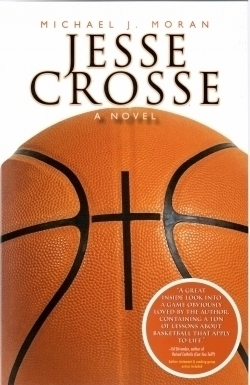Jesse Crosse
“So what if they’re bigger? Better? It hasn’t mattered before; why should tonight be any different?” the coach asked. “If we play as one, I think we will have an advantage.” That message reflects the impact of Jesse Crosse, an unassuming high-school basketball player who changed everything for his small-town team. And it’s only the first of many lessons beautifully depicted in this captivating allegory.
As a straight story, Jesse Crosse reads as a heartwarming tale about an underdog high-school basketball team in 1961 which, with the help of a wise and caring coach, a kid with surprising talents, and a few unexpectedly good players may finally become league champions. Along the way, they learn about acceptance, teamwork, racism (Jesse is black), and the power of putting others first. But when read as a subtle allegory, it is the story of Jesus Christ as told in the gospel of Luke.
In this novel, the Anglers of Jewelton can’t win a basketball game. Their coach—wise, encouraging, and willing to challenge them—doesn’t seem able to make it happen. Until some unexpected players join the team, including Jesse Crosse. Through Jesse’s example, players begin to put the team first, learn to accept each other, and discover that the coach’s unusual advice may just work.
Moran, like the coach in the story, teaches high school English. That experience infuses his writing with an understanding of a high schooler’s heart. And his background playing basketball allows him to write play-by-plays of exciting games that enthrall even those who don’t generally care for sports. Along the way, he manages to tackle issues of racism, making its ugliness real.
The story combines the warmth of Andy Griffith’s Mayberry with the play-by-play drama of a wholesome sports story like Hoosiers. In a few spots one begins to question whether the main character might be too perfect. The reader almost wonders if he is missing something; but that’s the intrigue of an allegory.
And this allegory of the life of Jesus Christ is beautifully done, keeping the “secret” of the second meaning well hidden until the end. (A special section offers an explanation of the story and an author Q & A.) And when the allegory is revealed, it doesn’t preach. Instead, it inspires the desire to re-read the story, and to wonder what the world might be like if more of us were like Jesse.
Reviewed by
Diane Gardner
Disclosure: This article is not an endorsement, but a review. The publisher of this book provided free copies of the book and paid a small fee to have their book reviewed by a professional reviewer. Foreword Reviews and Clarion Reviews make no guarantee that the publisher will receive a positive review. Foreword Magazine, Inc. is disclosing this in accordance with the Federal Trade Commission’s 16 CFR, Part 255.

